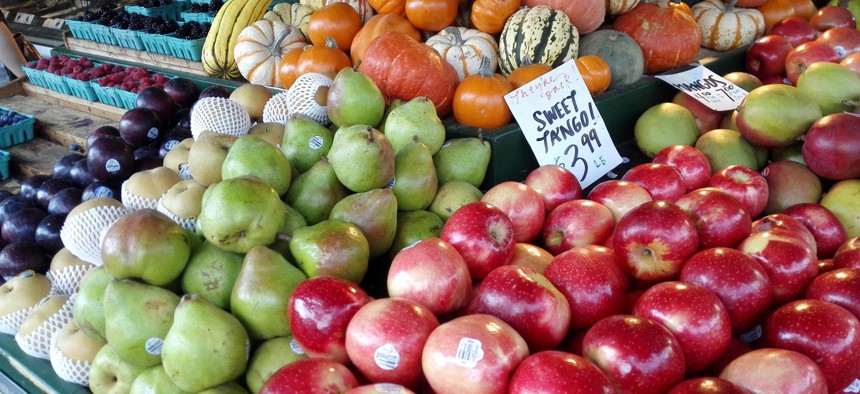Replenishing a Food Desert, One Store at a Time

A food desert is an area where at least a third of residents live more than a mile from a grocery store. Shutterstock

Connecting state and local government leaders
In Dayton, a community-owned and operated grocery store will set up shop in the heart of one of Ohio's largest food deserts.
Dayton ranks among the worst cities in the nation for food security among families with children. Nearly 30 percent of households in this part of western Ohio report trouble finding access to healthy foods, and the area has fewer grocery stores per capita than the state average, according to data from the Food Research & Action Center.
The high degree of food insecurity in Dayton is not surprising, as the city sits in one of Ohio’s largest food deserts, a term used by the U.S. Department of Agriculture to describe high-poverty areas where at least one-third of the residents live more than a mile from a grocery store. According to the USDA, lack of access to fresh food can lead to increased rates of obesity and diabetes, among other things.
Dayton officials are hoping a proposed full-service, community-owned grocery store can help address the food shortage there. The Gem City Market, a community-led project spearheaded by the Greater Dayton Union Co-op Initiative (GDUCI), is expected to open by the end of next year, with construction beginning by this December. It will be the city’s first cooperative grocery store, owned by its workers, customers and community supporters who purchase shares and memberships.
That involvement will be key to the store’s long-term success, said Dayton Mayor Nan Whaley.
“These are the types of things that work, because the community buys in and it’s the community’s idea,” Whaley told Route Fifty. “When the community has an idea and has been passionate about it and has envisioned it for themselves, those are the things that last the longest.”
Thus far, organizers have raised $2 million toward a goal of $4.2 million for capital costs, and have sold more than 1,500 memberships, said Lela Klein, executive director of GDUCI and a member of the Gem City Market board.
“We were hoping to sell 2,000 memberships by the time we open the doors, and now it’s looking like we’ll have 2,000 by the time we break ground,” Klein told Route Fifty. “Which is really amazing and a testament to the community organizing that’s been happening. We’ve also had incredible support from the city and the county.”
Other communities have turned to the idea of cooperative grocery stores to address the growing problem of food insecurity, particularly in low-income neighborhoods. In Greensboro, North Carolina, the Renaissance Community Co-op opened in a shopping center that had been without an anchor grocery store for nearly 20 years. In Cincinnati, the city council voted to partially fund a proposed co-op planned for an area that lost its only grocery store in 2013.
The Gem City Market team spent time talking to other cooperatives to learn about their triumphs and struggles in getting stores up and running. In Greensboro, for example, the Renaissance Co-op struggled due to a lack of marketing and a false assumption that everyone who bought a membership would return to shop at the store. (Some people, Klein said, will purchase memberships to support the project, but won't go out of their way to buy groceries regularly at the market.)
To avoid those pitfalls, organizers in Dayton have spent time canvassing neighborhoods around the Gem City Market site to discuss the project with residents—even those who may not purchase memberships. (Non-members can still shop at the store.) They’ve also included a 2 percent marketing budget in their financial projections, Klein said.
The market, which will be staffed by around 20 local residents, will sell “affordable, quality kitchen staples,” including fresh produce and meat, and “specialty, local and organic products that make the store a unique draw.” That could mean locally made hot sauce or produce grown at area farms, which will appeal to consumers who are dedicated to supporting local merchants, Klein said.
The store’s existence won’t solve the food desert. But it could serve as a model for similar projects that will further help food availability for the area.
“The priority is to tackle the food-desert problem, but to do it in a way that builds community and builds an opportunity for people to be a part of that,” Whaley said. “It’s deeper than just, ‘Here’s some food.’ It’s more about how the community can solve these problems on their own.”
That means less reliance on outside businesses, Klein said, and more investment in locally owned and operated ventures that target specific problems.
“In Dayton, we’ve seen a lot of third-party businesses leave and leave a lot of destruction in their wake. I’m not willing to wait for some third-party business to decide it makes sense for their consumer algorithm to come here,” she said. “We need groceries and we need to facilitate access to that ourselves, starting with this store and potentially later with future Gem City Markets out further into the food desert.”
Kate Elizabeth Queram is a Staff Correspondent for Government Executive’s Route Fifty and is based in Washington, D.C.

NEXT STORY: Citizen engagement and public service in the era of the IoT




